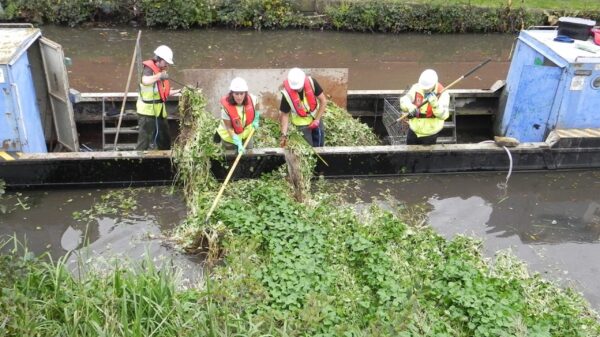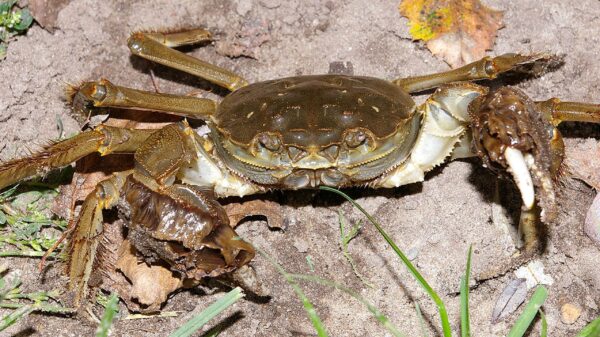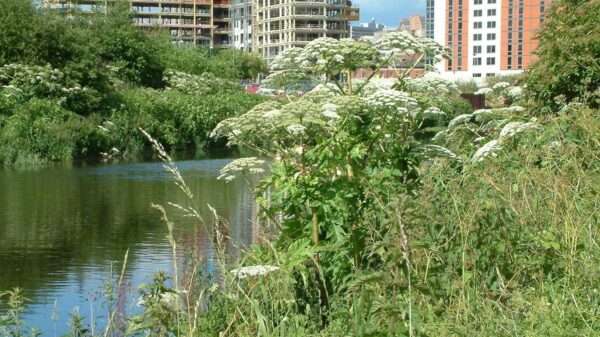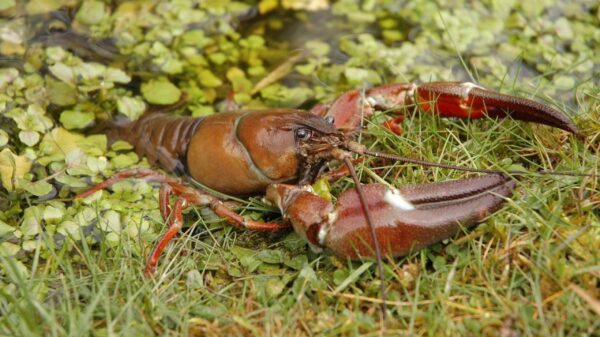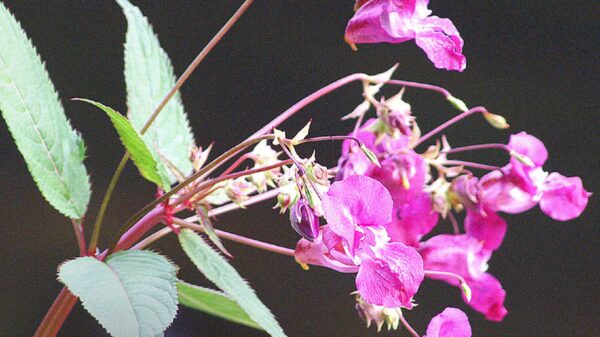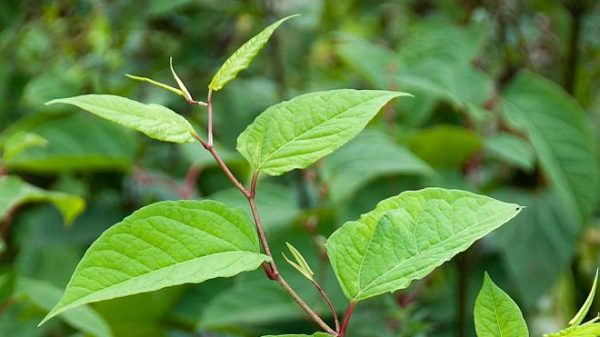Identifying Giant Hogweed
Giant Hogweed can be seen from spring to autumn and favours damp and partially shaded environments.
- Plants can grow up to 5m tall
- Large umbrella shaped flower heads that are up to 80cm in diameter with white or occasionally pinkish flowers facing upwards.
- Leaves are, up to 3m long, sharply serrated and have bristles on the underside.
- Stems also have sharp bristles, are 5-10cm in diameter and green with purple blotches.


